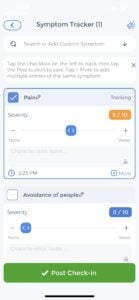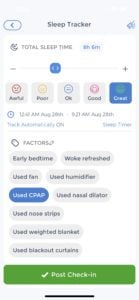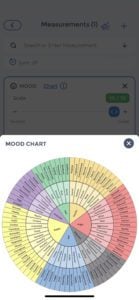
Wellness journaling is a process of reflection and self-discovery that can help you move towards greater wellness in all aspects of your life. By taking the time to journal about your thoughts, feelings, and experiences related to wellness, you can begin to gain insights into your own individual patterns and what may be holding you back from optimal health and well-being. Additionally, regularly journaling in your wellness journal may help you to track your progress over time and celebrate your successes along the way.
Why wellness journaling is beneficial
Wellness journaling offers a number of benefits that can support you on your journey to greater wellness. This reflective practice can help you gain insights into your thoughts, feelings, and behaviors. Understand what may be holding you back from making positive changes in your life. Additionally, journaling can provide you with a space to track your progress over time and celebrate your successes along the way.
How to get started with wellness journaling
If you’re interested in starting a wellness journal, there are a few things you’ll need to get started. First, you’ll need to choose a journal or notebook. It can be helpful to choose one that is specifically for your wellness journaling practice. This will help you to keep your journaling focused on your wellness goals. Additionally, you may want to choose a journal with blank pages so that you can write, draw, or doodle as you feel called.
Once you have your journal, it’s time to start writing. You can begin by writing about your current state of wellness. What are your thoughts and feelings related to your health and wellbeing? What areas do you feel good about and what areas would you like to improve? As you reflect on these questions, allow yourself to be honest and open with your answers. There is no right or wrong way to journal about your wellness. The important thing is that you are taking the time to reflect on your journey.
As you continue to journal, you may find that certain themes begin to emerge. You may want to focus your journaling on exploring these themes in more depth. For example, if you find that stress is a recurring theme in your journaling, you could explore ways to reduce stress in your life. This might include brainstorming ideas for relaxation or self-care, or writing about times when you’ve felt particularly stressed and what helped you to cope in those moments.
The frequency with which you journal is up to you. Some people find it helpful to journal daily, while others prefer to journal weekly or even monthly. The important thing is that you journal at a frequency that feels comfortable for you. If you find that you’re struggling to make time for journaling, try setting aside just 15-20 minutes each day or week to write in your journal.
Is there a wellness journal template?
There is no one right way to journal about your wellness. However, if you’re looking for a starting point, you may find it helpful to use a wellness journal template. This can provide you with some structure for your journaling and help you to focus on specific areas related to your health and wellbeing. A wellness journal template might include prompts such as:
- How am I feeling today?
- What are my thoughts on my current state of health and wellbeing?
- What are my goals for my wellness journey?
- What steps have I taken towards these goals?
- How have these steps made me feel?
- What challenges have I faced related to my health and wellbeing?
- How have I coped with these challenges?
- What has helped me to feel my best?
- Who am I becoming?
- What do I need to let go of?
- What do I need to let go of to become my best self?
- What are my core values?
You can use a wellness journal template as is, or you can tailor it to better suit your needs. If you find that certain prompts are not helpful for you, feel free to omit them or replace them with ones that are more relevant. The important thing is that you find a journaling practice that feels helpful and supportive for you.
Things To Track in Your Wellness Journal
There is no one right way to journal about your wellness. However, some people find it helpful to track specific things in their journals. This might include:
Symptoms (if you are managing a health condition)

Why it matters: Tracking symptoms such as pain, fatigue, or brain fog can help you to identify patterns and triggers. This information can be shared with your healthcare team to better manage your health condition.
CareClinic comes with a built-in database of symptoms which helps you quickly record which symptoms you experienced. For additional journaling or tracking needs, consider using the severity slider to record how intense the symptom was along with the time you felt it and notes related to the symptom. You can just as easily add multiple instances of the same symptom if you experienced it multiple times that day by tapping the +More button at the bottom.
Period Tracking (for people with menstrual cycles)
When did your period start and end? What symptoms did you experience during your cycle?
Why it matters: Period tracking can help you to better understand your menstrual cycle and identify patterns or changes. This information can be shared with your healthcare team to investigate potential causes.
Pregnancy (for people who are pregnant or trying to conceive)
What symptoms are you experiencing? How is your pregnancy progressing?
How it can help: Pregnancy journals can be a great way to document your pregnancy journey because they provide a space for you to track both the physical and emotional changes you are experiencing. Many pregnant mothers experience a range of emotions, from excitement and joy to anxiety and fear. Excitement because they are going to be a mother and joy because they are bringing a new life into the world. However, anxiety and fear can then overpower these other happy emotions because of the many unknowns that come with pregnancy and childbirth. A journal can help to provide some clarity during this time by allowing you to track your thoughts.
Medications and supplements
What medications and supplements are you taking? How do they make you feel?
Why it matters: Keeping track of your medications and supplements can help you to ensure that they are effective and safe.
Diet and eating habits
What are you eating and how does it make you feel?
Why it matters: Keeping track of your diet can help you to identify patterns and make changes that will improve your overall health. If you’re interested in using your journal to help with meal planning, there are a few different ways you can go about it. You can use your journal to track your food intake and to reflect on your eating habits. You can also use your journal to plan ahead for upcoming meals. Meal planning can help you to save time and money, and to make healthier choices when it comes to food.
Hydration Tracking
Staying hydrated is important for overall health and wellness. Doctors recommend drinking eight 8-ounce glasses of water per day. However, the amount of water you need to drink may vary depending on your individual needs. We often forget to drink water, especially when we’re busy. If you’re having trouble remembering to drink enough water, try adding a water reminder in the CareClinic app.
Physical activity
How much physical activity are you getting each day? What types of activities do you enjoy? Why it matters: Tracking your physical activity can help you to ensure that you’re getting enough exercise, which is essential for good health.
Exercise Tracking
If you’re interested in using your journal to track your exercise, there are a few different ways you can go about it. You can use your journal to track your workouts and to reflect on your progress. You can also use your journal to plan ahead for upcoming workouts. Exercise tracking can help you to stay motivated and on track with your fitness goals. If you are looking for workouts or want to objectively track physical activity, CareClinic has an “Activity Tracker” which lets you record sets for exercises or distance for walking to get a better sense of how you’ve been doing rather than just writing about it.
Sleep Tracking (Daily, Weekly or Monthly)

Why it matters: Getting enough quality sleep is important for overall health and wellbeing.
If you’re interested in using your journal to track your sleep, there are a few different ways you can go about it. You can use your journal to track your sleep patterns and to reflect on your sleep habits. Sleep tracking can help you to identify patterns and to make necessary changes to improve your sleep quality. CareClinic comes with a built-in sleep tracker to create more objective journal entries related to sleep. This helps you view charts, logs, and correlations based on other parts of your wellness journey.
Some prompts related to sleep or insomnia to get you started:
- How many hours of sleep did I get last night?
- Did I have any trouble falling asleep?
- What time did I wake up this morning?
Mood

Try these 3 additional prompts for journaling about your mood:
- How did I feel when I woke up this morning?
- What emotions have I felt today?
- How do I feel right now?
Gratitude
What are you grateful for each day?
Why it matters: Cultivating a sense of gratitude has been shown to improve mental and physical health. Other prompts about gratitude:
- What good things happened today?
- What are 3 things I’m grateful for?
- What was the best part of my day?
Daily reflection
What did you do today? What were your successes and challenges?
Why it matters: Reflecting on your day can help you to identify patterns and make necessary changes.
Energy levels
How much energy do you have each day? What can you do to increase your energy levels?
Why it matters: Having enough energy is essential for leading a productive and fulfilling life. A few more prompts related to energy levels:
- What activities make me feel more energized?
- What time of day do I have the most energy?
- What can I do to increase my energy levels?
Self-Therapy
Self-therapy journaling is a type of journaling that is focused on personal growth and healing. If you’re interested in using journaling as a way to explore your emotions and work through personal issues, self-therapy journaling might be right for you. Self-therapy involves using journaling to explore your thoughts and feelings about specific issues or problems in your life such as anxiety, depression, trauma, and relationship difficulties.
Other things to track in your journal
Morning and Evening Journal
The morning journal is a great way to start your day. It can help you to set your intention for the day ahead and to reflect on the previous day. The evening journal is a great way to wind down at the end of the day. It can help you to process your thoughts and feelings about the day, and to reflect on your successes and challenges.
Brain Dumps
A brain dump is a type of journaling where you simply write down whatever is on your mind, without editing or censoring yourself. This can be a great way to get all of your thoughts and feelings out on paper, and to provide yourself with some relief from stress and anxiety. Brain dumps can also help identify patterns and triggers related to your thoughts and emotions.
Quick Lists
Quick lists are a type of journaling where you make a list of things you need to do. This can be a great way to get organized and to ensure that you don’t forget anything important. Quick lists can also help you to prioritize your tasks and to plan your time more effectively.
Chores & Cleaning
If you’re interested in using your journal to track your cleaning and chores, there are a few different ways you can go about it. You can use your journal to track your cleaning schedule and to reflect on your cleaning habits. Plan out what you need to clean first and why. Cleaning your surroundings will help you feel more organized and stress-free.
Progress Tracker for planning ahead
One of the benefits of using a journal is that it can help you to track your progress and see how far you’ve come. If you’re feeling stuck or like you’re not making any progress, looking back through your journal can help to remind you of how far you’ve come and the progress you have made. It can also be helpful to set some goals for your journaling practice.
Productivity Tracking
If you’re struggling with procrastination, journaling can help you to identify the root cause of your problem and to find a solution. You can use your journal to track your daily, weekly, and monthly tasks. You can also reflect on your productivity level each day and week, and identify any patterns.
Level 10 life planner
The Level 10 Life planner is a tool that can help you to set and track your goals. It can also help you to reflect on your progress and to identify any areas that need improvement. The Level 10 Life planner includes a section for journaling, which can be used to track your thoughts, emotions, and progress.
SMART goal planner for being more productive
SMART stands for Specific, Measurable, Achievable, Realistic, and Timely. An example of a SMART goal is “I will journal for 20 minutes every day for the next week.” This goal is specific, measurable, achievable, realistic, and timely because it is defined, it has a set time frame, and it is something that can be realistically accomplished. Another example could be “I will eat 5 fruits and vegetables every day for the next week.” If you don’t meet your goal then you can identify what went wrong and adjust your goal accordingly.
Daily Wellness journal for managing chronic conditions & disease
If you’re living with a chronic condition or disease, wellness journaling can be a helpful tool for managing your health. This type of journaling can help you to track your symptoms and monitor your progress over time. Additionally, it can provide you with a space to reflect on your thoughts and feelings related to your health. When journaling about your chronic condition or disease, you may want to focus on topics such as:
- Your symptoms and how they’ve changed over time
- Any treatments and how effective they’ve been
- Your diet and lifestyle choices and how they’ve impacted your health
- Your thoughts and feelings about your health
- Your goals for managing your chronic condition or disease
- Your progress toward these goals
- Any challenges you’ve faced in managing your chronic condition or disease
- How you’ve coped with these challenges
- Planning your journaling practice
Now that you know a bit more about journaling for wellness, it’s time to start planning your own journaling practice. Here are a few things to consider:
- What is your goal for journaling? What do you hope to accomplish by journaling about your health and well-being?
- How often do you want to journal? Once a day? A few times a week?
- How much time do you want to spend journaling each day or week? 5 minutes? 30 minutes? 1
- What time of day do you want to journal? In the morning? Before bed?
- What format do you want to use for your journaling? A traditional journal? A bullet journal? An online journal?
- What type of prompts do you want to use? See the list above for some ideas, or create your own.
Keeping a digital wellness journal in the CareClinic App

You can also supplement this with built-in trackers that allow you to track your physical activity, nutrition, and medications. This system allows you to really focus on problem areas in your life and resolve them by looking at charts and correlations to determine the root cause of any issues you are experiencing.
A digital diary is a far superior choice for 3 simple reasons: It can’t be lost or misplaced, you can track changes more easily over time by looking at prior entries, and it can be password protected for privacy, unlike physical notebooks.
To get started, simply download the app and create an account. Then, you can start journaling about your health right away. When you’re finished, you can save your journal entries and track your progress over time.


